When travel becomes more ubiquitous (and safe) again, you’ll likely want to prioritize remote adventures. We found the most epic trips on all seven continents, from Ethiopia to Italy and beyond to give you some inspiration.
The Most Epic and Remote Adventures to Experience on All 7 Continents
Tuscany, Italy: An Adventure Renaissance
Even just saying the word Tuscany feels relaxing. But don’t mistake this part of Italy for being only about vineyard tours and villa escapes. The region has long been an under-the-radar haven for plucky Italians seeking out an adrenaline buzz, as I learned last year.
Mountain ranges like the dramatic Apuan Alps, which rise 6,000 feet from the Mediterranean Sea, and dormant volcanoes like Monte Amiata provide thrilling downhill mountain-bike runs and networks of forest hikes. There are quiet roads and gravel trails for road cycling, plenty of crags and ridges for climbing, and even canyoneering in narrow river canyons. Tuscany also has 140 miles of coastline for sailing, kayaking, or SUP-ing. Best of all, the region is chock-full of geothermal activity, meaning it’s littered with (mostly free) hot springs like those in the town of Saturnia, where hot sulfur pools are perfect for sore muscles. And yeah, there’s no shortage of vino to relax with, too. — Yvonne Gordon
1. Bike Parking
Monte Amiata ski resort has a beech forest with, come summer, 22 miles of downhill trails. Stay at the Hotel Le Macinaie ($55 per night), across from a local bike park.
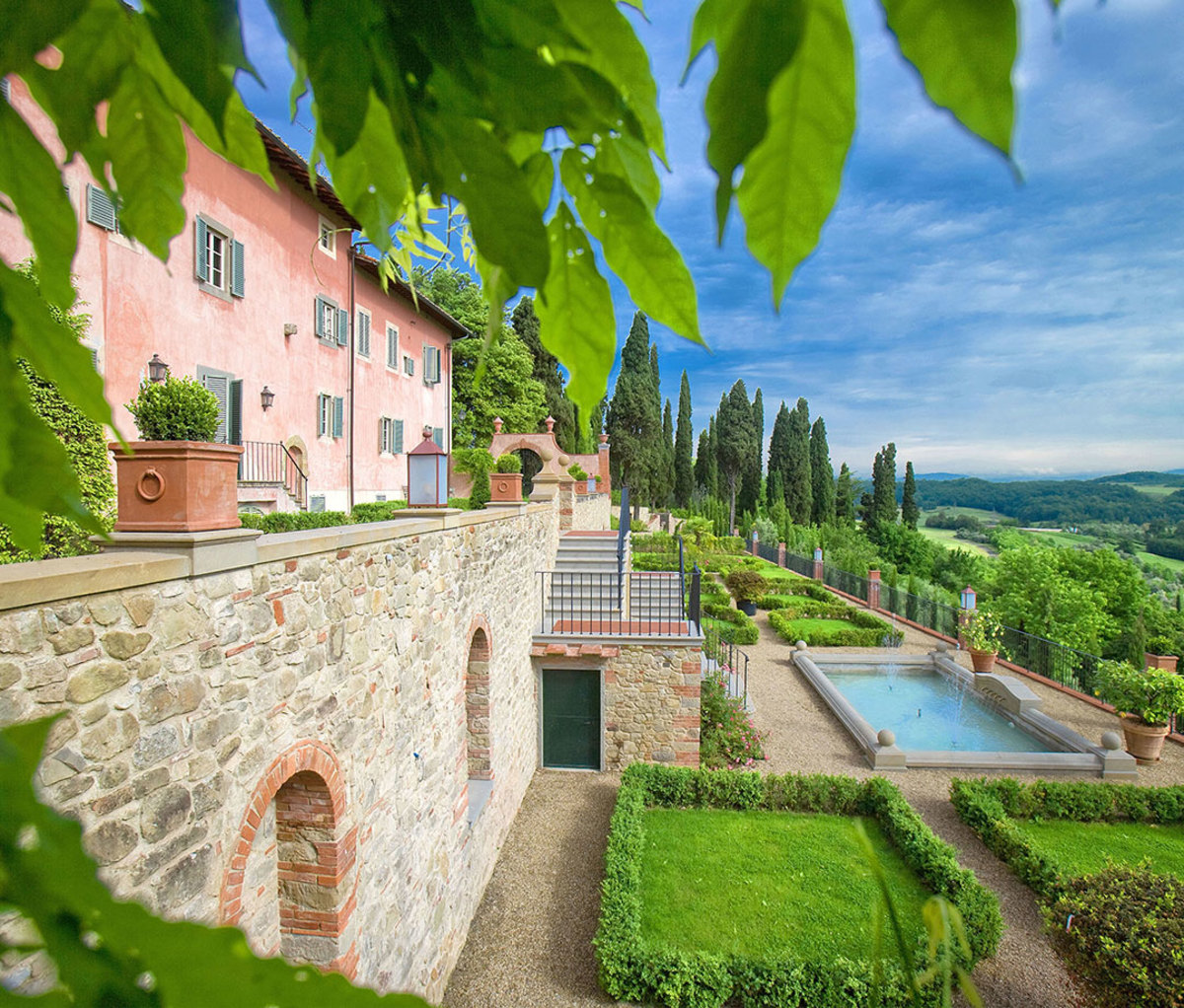
2. Estate Planning
If you’re headed to Tuscany, R&R is a must at some point, and there’s no better place than Villa Barberino, which dates to the 14th century and has a pool and gardens overlooking a peaceful valley.
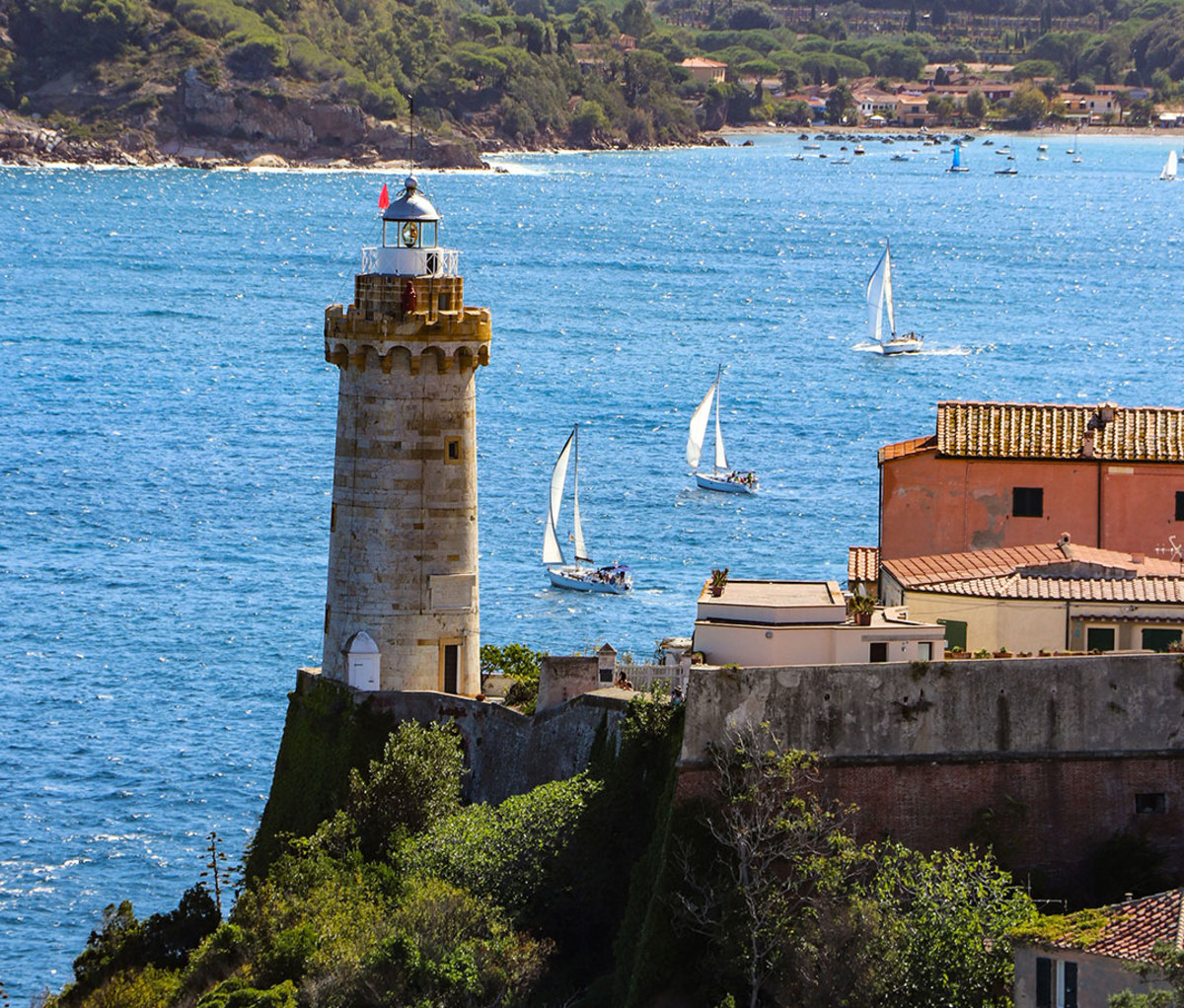
3. An Elba Escape
The Ligurian Sea coastline is stunning, with the Tuscan Archipelago’s seven islands just offshore. You can sail to the largest, Elba, by taking a boat from Piombino, then hike to the top of 3,343-foot Monte Capanne. It may be the Mediterranean’s best view.

Iberá Nature Reserve: Rewilding in Remote Argentina
This winter, while snapping a photo of a caiman—basically a South American alligator—in northern Argentina’s Iberá Nature Reserve, I was reminded of why this part of the world is so, well, wild. While stretching out my arm to snap a pic of the animal, which was maybe 10 feet away, I realized that my extended hand was hovering a foot above an even bigger caiman, obscured by the water. I nearly upended the kayak recoiling at its murky marble eyes.
But instead of chomping the iPhone out of my hand—and my arm along with it—it didn’t even seem to notice me. And that was my experience with nearly all of the animals I witnessed: curiosity rather than concern. This was undisturbed nature, where human presence is a novelty—and a sign that years of dedicated conservation work has paid off.
Iberá, a labyrinth of forests, grasslands, and shallow lagoons, is one of the world’s largest wetlands. Yet its name barely even registered two years ago, when a huge swath of it became a national park. Now tourists are catching on that there’s a swampy slice of Argentina that’s ripe for safari-style adventures to see giant anteaters, marsh deer, and capybaras, the world’s largest rodents.
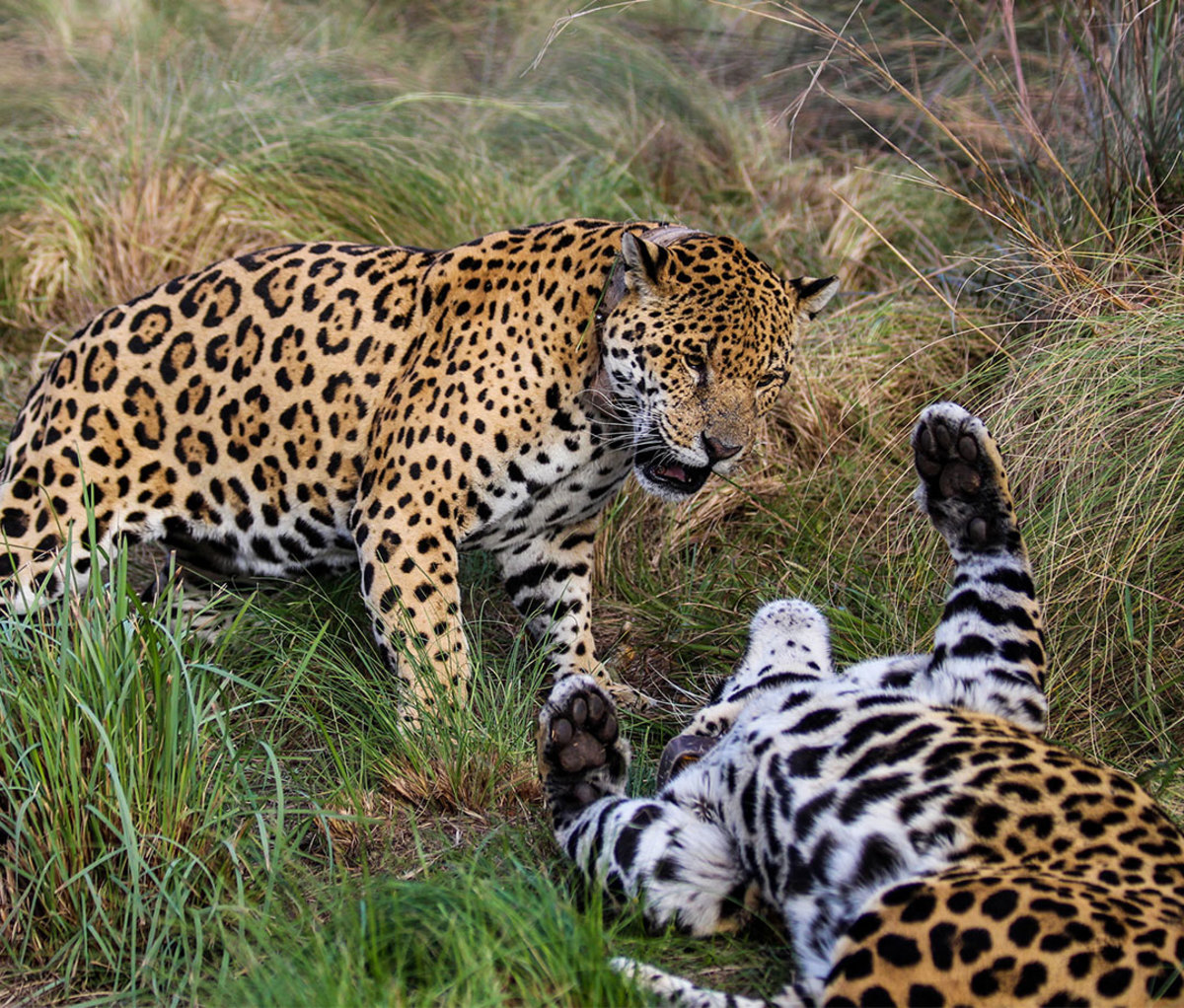
When I arrived after an overnight bus ride from Buenos Aires, the sun burst out of the pancake-flat wetlands as we raced rheas, a cousin of the ostrich, down red-dirt roads. The HQ for the nonprofit behind Iberá is Rincón del Socorro, a grand old estancia outfitted with timber furnishings and thick-framed animal portraits on the walls. It is the creation of Kris Tompkins, the former CEO of Patagonia, and her late husband, Doug, the co-founder of The North Face. Together, over two decades, they acquired private land that was ultimately donated to the federal government to create the park.
What were once rice fields and cattle ranches is now ground zero for the largest and most ambitious rewilding project in the Americas. Five locally extinct or endangered native species—including the pampas deer, giant anteater, and green-winged macaw—have been reintroduced since work began in 2007. The project will enter its next phase this year when as many as five young jaguars are released on the remote San Alonso Island. It’ll be the first time in over half a century that the wild cats have roamed this part of Argentina.
THIS IS UNDISTURBED NATURE, WHERE HUMAN PRESENCE IS A NOVELTY.
The project’s communications director, Rafael Abuin Aido, says that reintroducing the apex predator will be the ultimate test of the ecosystem’s health. If it works, he says, “Iberá has the potential to become the best destination in the world to see a jaguar in the wild.”
While staying there, I contented myself with evening paddles to the floating reed islands of Fernández Lagoon, where I tracked marsh deer and stumbled upon capybara mud baths. Mornings, I hiked along the 6.5-mile Sendero Lobo Cua, which skirts through a palm forest pulsating with the guttural roars of howler monkeys.
The air in the park was thick and herbaceous. More than once, I was tempted to dip my feet into one of Iberá’s 75 lagoons, but then thought better of it, remembering stories I heard in the lodge of old hunters who cooled off in the waters only to reemerge half-eaten by piranhas. Yes, this is unspoiled nature—in all its savage beauty. — Mark Johanson
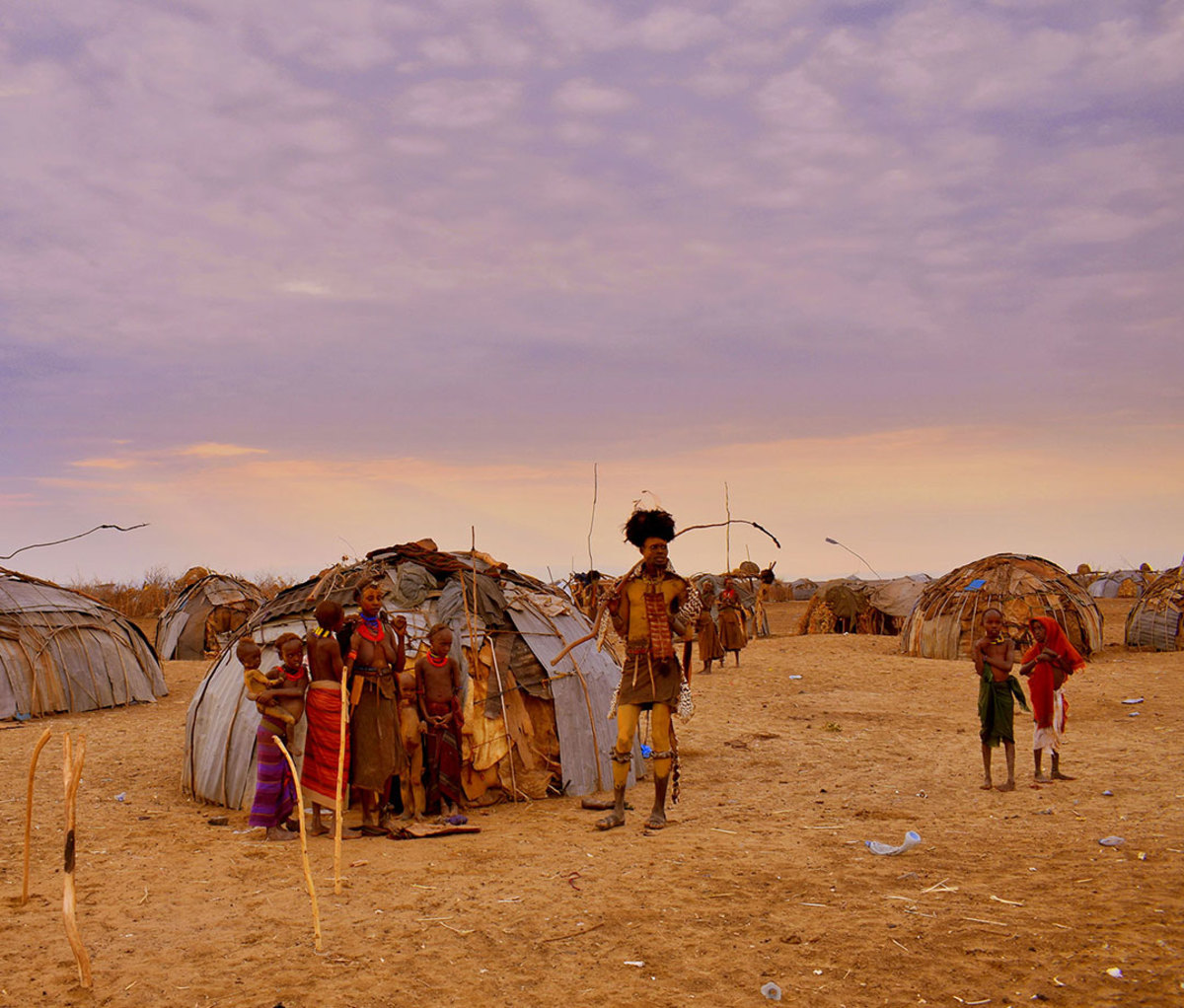
Omo River, Ethiopia: Camping With Remote Tribes
When your dance partner has an AK-47, you choose your moves carefully. I learned this on my fourth night in Ethiopia’s Omo Valley, where a local people, the Mursi—known for the plates the women put in their lips—have decided to throw an impromptu dance party. A bonfire is ablaze, and a circle forms. I don’t understand the words of the songs, but I clap along to the rhythm. It doesn’t take long before a statuesque man, face painted white, approaches and begins to stamp the butt of his gun at my feet. I look around alarmed, then realize that this is the Mursi gesture for “Do you want to dance?”
Only a tiny number of travelers—just a few thousand—come to the Omo Valley each year, and the majority descend on markets and villages east of the Omo River to snap a few photos of the area’s famously adorned tribes (and often pay for the privilege). Then there are the 50 or so visitors, like myself, who take a boat to the remote, crocodile-infested Omo Delta and stay at Lale’s Camp, the only seasonal tourist camp in the valley. The fig-shaded camp—a sustainable tourism collaboration between outfitter Journeys by Design, Wild Expeditions, and Lale Biwa, a member of the local Kara people—offers what may be Africa’s most unique cultural experience: one where village life goes on around you, not for you.
The REASON TRAVEL IS SO TRANSFORMATIVE IS NOT THE LOCATION: IT’S THE PEOPLE.
A trip to the area starts in the capital of Addis Ababa, followed by a charter flight to the Omo Valley. After a boat ride up the river, seven spacious tents await, each equipped with running water, electricity, and flush toilets. It’s a cushy base for being so remote, but the real luxury is the location next to Dus, one of three settlements belonging to the Kara community. When our boat docks at Lale’s Camp, dozens of curious children escort me to shore, where a body-painting ceremony is already taking place. The adults, so engrossed in drawing ocher dots and charcoal stripes on each other, barely acknowledge my presence.
During my five-day stay, I also visit neighboring communities. A 4×4 ride from Lale’s Camp to a nearby Hamar village doubles as a wildlife safari, with Lale pointing out a leopard tortoise and dik-diks, tiny African antelopes. Similar to the Kara, the Hamar are known for decorating themselves with elaborate beads and body paint. Lale invites me into a hut where the men are passing around a gourd filled with a fermented brew. The homemade hooch is a staple of the Kara’s bull-jumping ceremony, a rite of passage where young men run naked over the backs of bulls lined up in a row.
To meet the Mursi, we travel three hours upriver by boat to a no-frills camp.
The Mursi walk eight hours down from the mountains and set up camp alongside us. In return for this meeting, Lale has brought them razor blades (used for scarification), food, and other supplies. The morning after our dance party, while walking among our hosts, I notice the women giggling while mimicking my terrible dancing. When one girl slips a plate into her stretched-out lower lip, I instinctually grab for my iPhone, then stop. Photos are discouraged here to help prevent locals from pandering to people like me. But the practice is beneficial to tourists, too. Standing there laughing with the women would not have been possible if I was focusing my gaze through a lens. Instead, I was able to fully immerse myself, to laugh along with them.
The reason travel is so transformative, after all, is not the location. It’s the people we meet and our candid interactions with them—even if it’s only through smiles, gestures, and, yes, some bad dance moves. — Jen Murphy
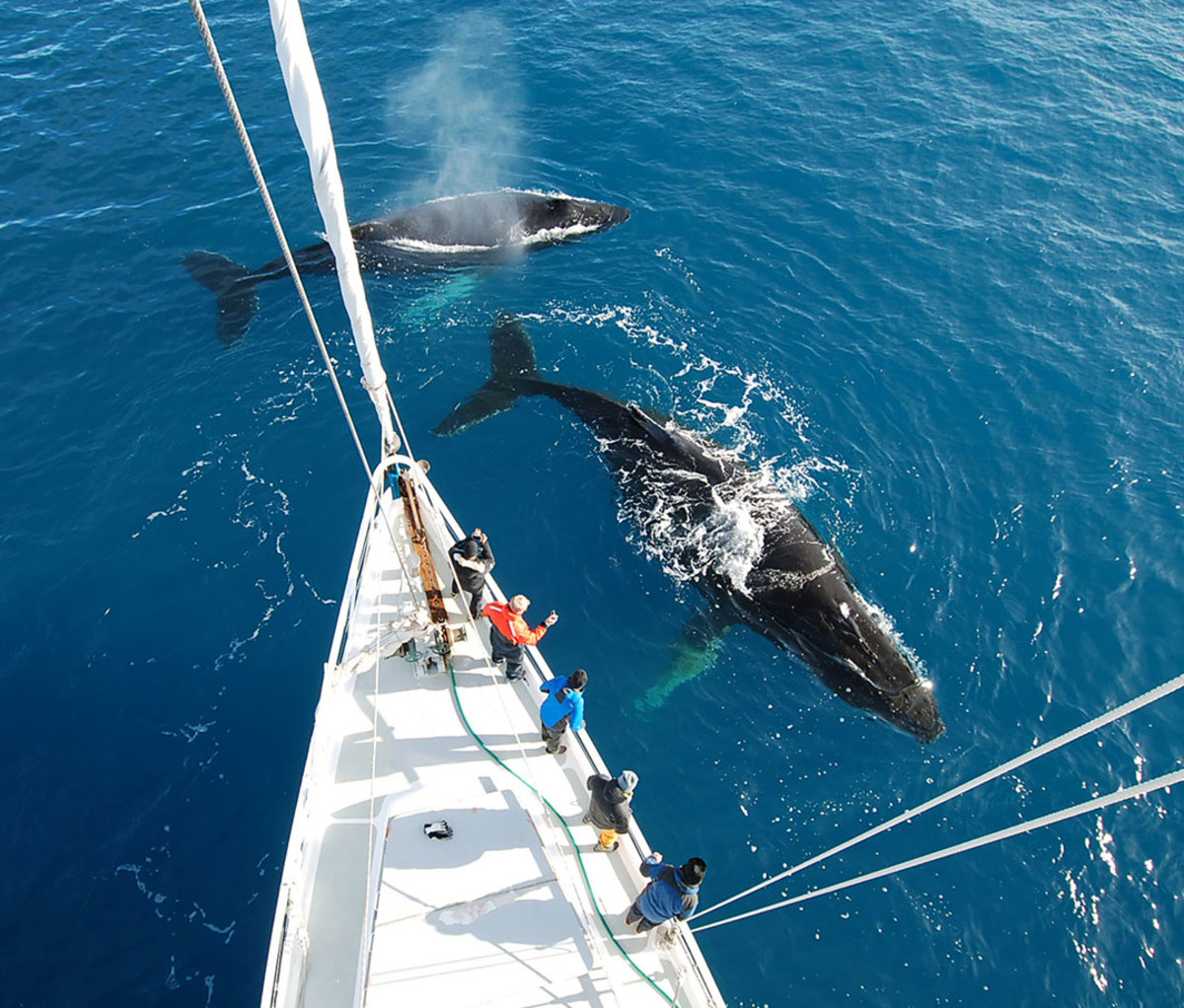
Antarctic Peninsula: Sailing the Coast of the Last Continent
Deception Island, off the northern tip of Antarctica, must count as one of the planet’s most freakish places. The hulls of 1900s whaling boats rest in the black sand while big blubber boilers fade on the beach like props in a steampunk dream. It’s a doughnut of land, a flooded caldera with a bay in the center where the active volcano there once heated the water high enough to strip the paint off ships.
A trip to this part of the Antarctic Peninsula—an 800-mile-long pinkie ringed with crabeater seals, chinstrap penguins, and colossal ice—is all about the boat, and ours was exceptional. The SV Australis was a 75-foot yacht with just 11 souls aboard, and Deception was one of the first stops on a 17-day journey. While using the ship, operated by outfitter Natural Habitat Adventures, as our floating home base, we paddled around icebergs glowing an alien green in Paradise Harbor.

We took Zodiacs to rocky beaches for snoozes in the sun. With no real schedule to keep, we’d cut the engines to listen to minke whales chuffing through the channel and camped for a night on a dollop of ice no bigger than a rink.
In the end, though, simply being onboard proved the most memorable. Many afternoons I’d climb into the crow’s nest to watch the ice slide around the bow or hang out on the bridge as hourglass dolphins played to starboard. Come evenings, we’d sit around a large table in the stern and eat lasagna and fish prepared by a French chef. Back home, I could hardly talk about it without getting choked up. Such is the power of Antarctica. — Tim Neville
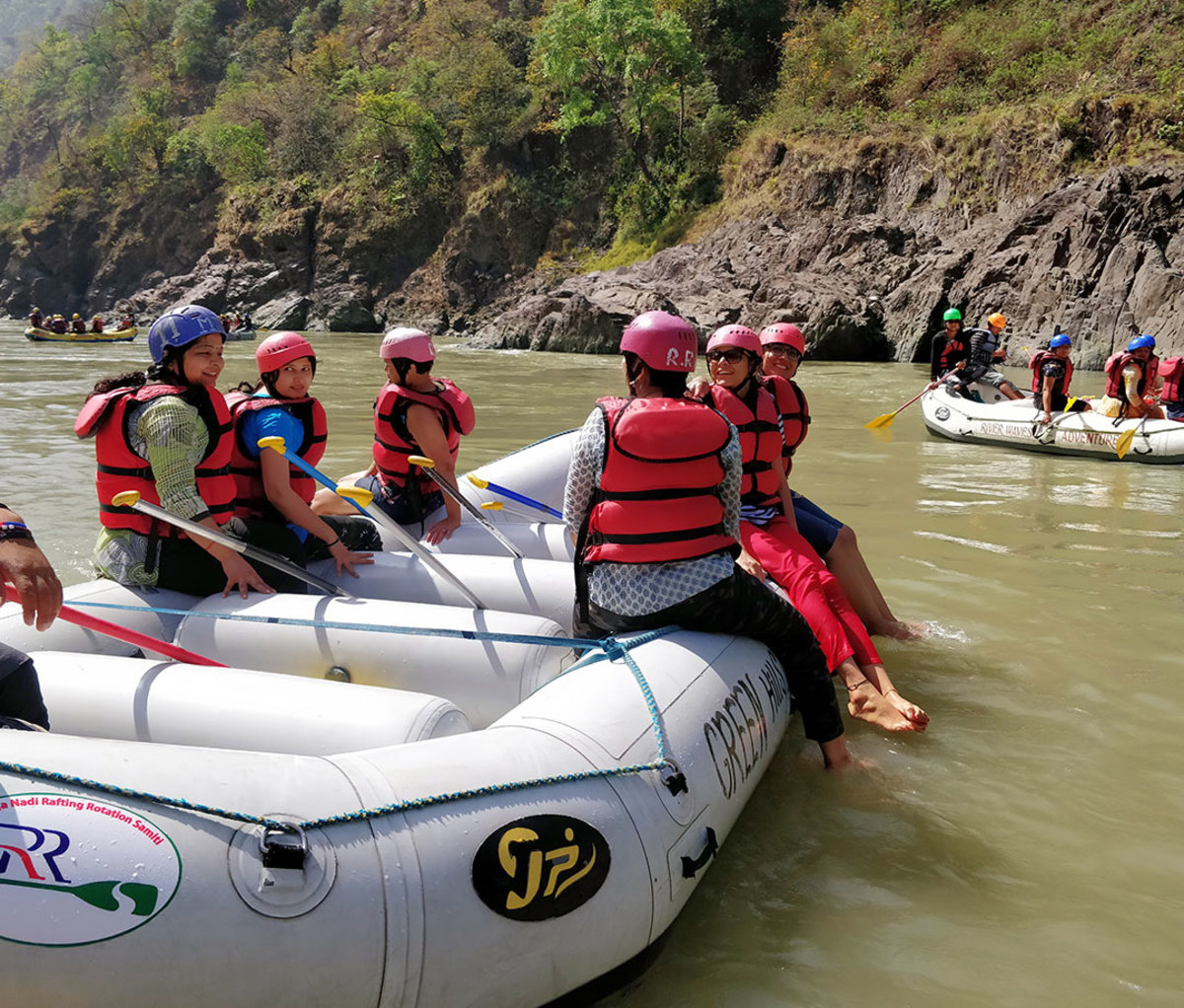
Ganges River, India: Rafting the World’s Holiest River
In India, the Ganges River is sacred water, almost a deity unto itself. It may also be toxic and full of rotting bodies by the time it empties into the Bay of Bengal. But as it gushes from its source near the Tibetan border, it’s something else entirely: wild, unspoiled, and as blue as toothpaste. Outside the Himalayan town of Rishikesh, there’s a 25-mile section perfect for rafting, too, offering challenging Class III and IV rapids, as I discovered in December.
Rishikesh is often called the yoga capital of the world. Five decades ago, the Beatles traveled here for a course in transcendental meditation and inspired a generation of seekers to the area. These days, though, it’s more about adventure. “The type of people who came here in the past were looking for some sort of spiritual enlightenment, but the perception has changed,” said Deeya Bajaj, my guide at the rafting company Snow Leopard Adventures. The outfit operates three tented camps along the Ganges and has become the de facto operator for all things outdoors in this area of the country. In addition to rafting, there are a labyrinth of mountain paths for trekking, zip-line tours across canyons, and, farther afield, wildlife safaris to see Asian elephants and even Bengal tigers.
Of course, as you travel here, you pass constant reminders of the Rishikesh of yore. There are the Westerners plucking sitars at an ashram dedicated to the late, infamous guru Osho (of Wild Wild Country fame) or the sadhus (Hindu ascetics) laundering orange robes on the river’s edge. When you wash up in town, just below the now-abandoned “Beatles ashram,” it feels as if some form of enlightenment—be it in mind, body, or spirit—was an inevitable part of the journey. But such is India, even when all you’re after is a shot of adrenaline. — Mark Johanson
Tasmania, Australia: Down Under’s Wild Island
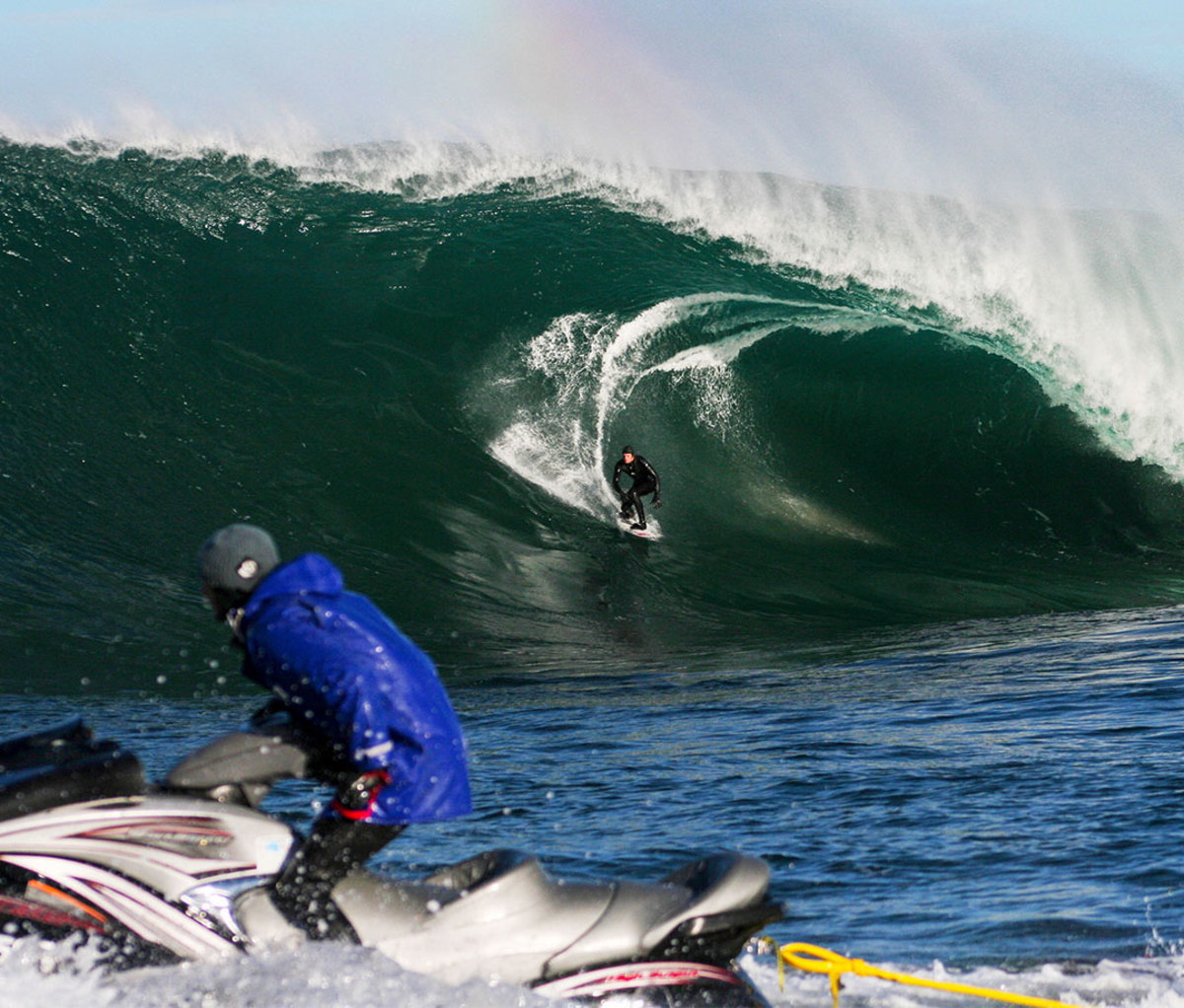
1. Surfing Shipstern
It’s numbingly cold and a four-mile hike to the water, but when it’s on, Shipstern Bluff churns one of the world’s most challenging big waves. “Tassie” also offers numerous gentler breaks, like Clifton Beach, Eaglehawk Neck, and Bruny Island—all within a 90-minute drive from Hobart.

2. Lake Region Trout
The best sight fishing on the planet is found in Tasmania’s Western Lakes region. Here, seven-pound browns cruise gin-clear creeks and tarns, devour small frogs, and (if you can make a perfect cast) might even inhale your dry fly.
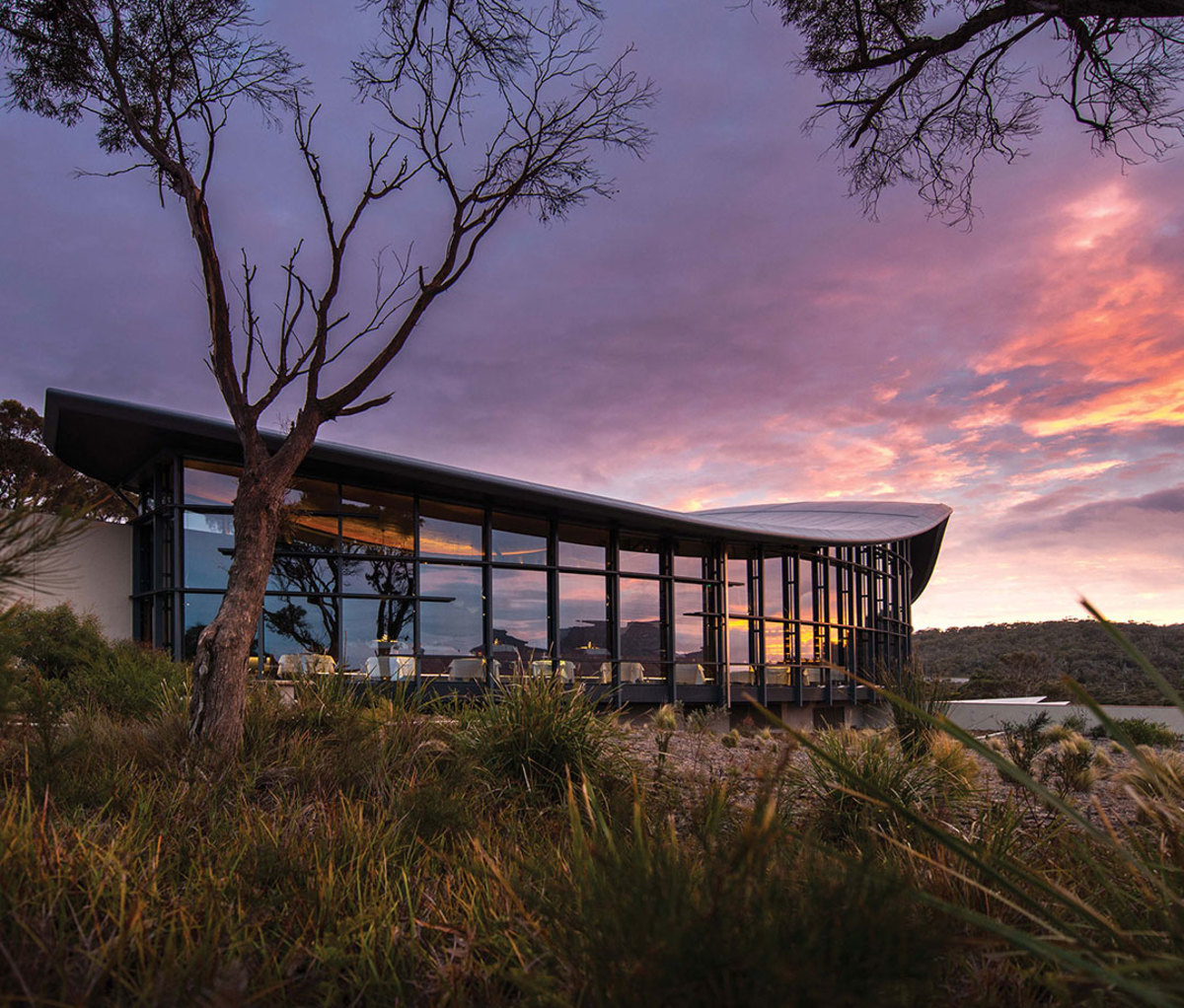
3. Upscale Digs
Set above the white sands of Great Oyster Bay, Saffire Freycinet is one of the best small hotels in all of Australia. It’s an ideal base camp for wildlife-watching hikes and kayaking or simply chilling, sampling local oysters, and sipping Tassie vintages.

Yellowstone National Park, Wyoming: Llama-Packing Into Grizzly Country
There’s a reason 4 million people visit Yellowstone National Park every year: It’s simply incredible. Bison, geysers, grizzly bears, wolves—the 2.2-million-acre park has them all. The bulk of visitors, however, don’t experience just how truly mind-blowing Yellowstone is. For that, you need to trek deep into the backcountry, and the best way to do that is via llamas—goofy, wily, lovable llamas.
Last summer, nine companions and I hiked 10 miles along Cache Creek, near the Lamar Valley, with a dozen of the animals. We caught cutthroat trout by the dozen, trekked high through pristine mountains, drank beer around campfires, and swam in frigid creeks. Mostly, though, we moved from camp to camp.
THE BEST WAY TO EXPERIENCE THE BACKCOUNTRY IS BY LLAMA—GOOFY, LOVABLE LLAMAS.
Llamas, which are bred to haul heavy stuff, proved precisely docile enough and just stubborn enough for the task. Low impact and low fuss, they knew exactly one command—“stand”—and they each schlepped 60 pounds of gear. They also had enough wherewithal to bark if they saw or smelled a predator nearby, making them an ideal guard for camp. “I sleep well with them surrounding us,” explained our guide, Thomas Baumeister, of Access Wild, a Yellowstone llama outfitter.
The llamas’ alertness came in handy on evening three. As our group sat around a campfire, the llamas, staked around camp, started to bark. We were grizzly-ready, having seen plenty of scat and other signs. We glassed the distant ridges. Nothing. An hour later: more barking. More glassing. Then a big male bison came sauntering down a bluff.
False alarm. Damn llamas! Then, as we settled back in around the fire, the yips and howls of wolves floated into camp. They were far off and of no real concern. But at least we knew. The llamas, meanwhile, just stood there, sort of barking, sort of brilliant. — J.R. Sullivan
from Men's Journal https://ift.tt/2ZjRqRo
via IFTTT








0 comments:
Post a Comment